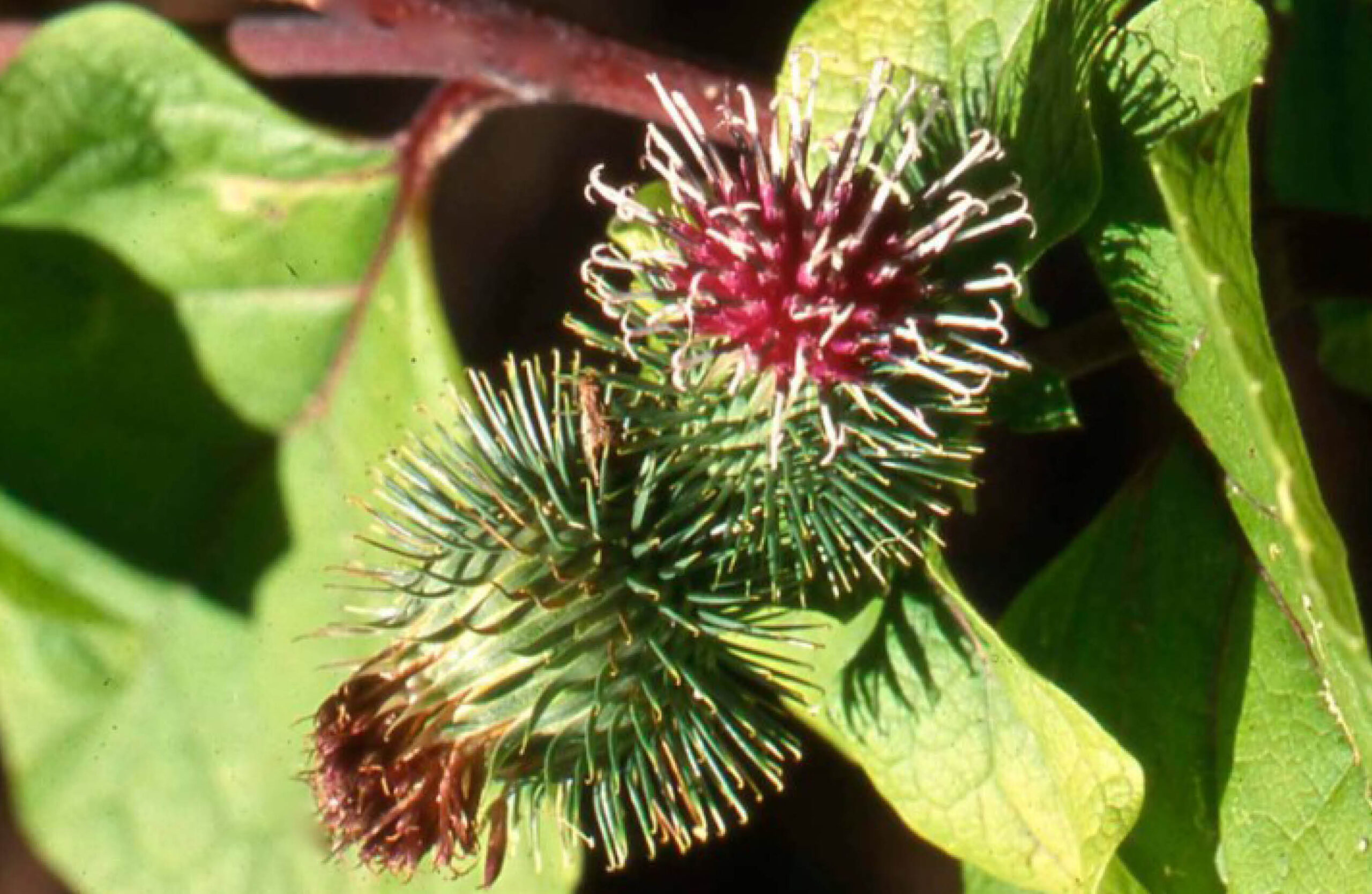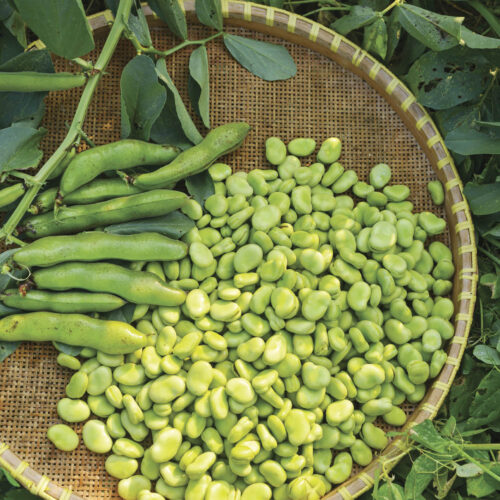Herbs: burdock
2010-02-12T01:06:49+11:00
Burdock (X Arctium lappa X) may be a tough, unglamorous and thistle–like, but it has a delicious edible root and invaluable medicinal uses,
Burdock is a tall-growing, short-lived perennial that starts as a clump of very large, grey-green wavy-edged leaves. If left in the ground, in the second year a tall, branched flower stalk to 2m grows from the centre of this clump. Flowers are small, numerous, purple or white, and are followed by spiky seedpods. Burdock roots resemble parsnips although they are usually thinner and longer. The skin is brown and the flesh white.
Burdock history
Burdock is a common native plant of Europe and temperate regions of China and is also naturalised across most of America. In these places it is grown in gardens as well as wild-harvested. The Japanese know it as “gobo” and have grown it commercially for centuries, with cultivars such as ‘Nongya’ and ‘Takinogawa Long’ being popular in cuisine. Burdock grown commercially in Australia is mainly exported to Japan. Surprisingly, although burdock is native to temperate regions and grows well there, it actually grows best in warm, humid climates. In colder climates frosts will kill the leaves, but they re-shoot in spring.
When to plant burdock
In temperate and sub-tropical regions, sow seed in spring or autumn into well cultivated, deeply dug soil with a pH of 6.5 to 7.5. Seeds that have been soaked in water overnight will germinate more readily. Soil temperatures need to be at least 10°C. In my southern Victorian garden I usually plant seed in spring once the soil has warmed up. In truly tropical regions, like Darwin, burdock is grown as a winter crop.
Once seedlings are established, thin them to a spacing of about 20cm in all directions. This close spacing encourages long straight roots. Once the plants are growing well don’t water too often, but always give a good soaking; this will force the roots to search more deeply for water. Mulch to suppress weeds and reduce evaporation.
When to harvest burdock
Roots are harvested about five months after spring sowings, or eight months after autumn-planted crops. To harvest the roots, dig deeply with a garden fork and gently tug on the tops until the whole plant comes free. I always remove most of the flowers before they develop, because the prickly seedpods are a nuisance and the whole plant has the potential to become a problem weed.
Leave one plant to go to seed to collect seed to replant for next year. Burdock is prone to nematode attack, so if these are a problem in your garden then plant tagetes marigolds (X Tagetes X sp.) or mustard in the ground where burdock is to be grown and then dig them into the soil before planting.
Culinary and medicinal uses
Fresh burdock root is sweetly pungent and nutty. I love to peel young roots, sprinkle with salt and eat fresh for a delicious snack. I also peel the older roots, then soak in water for about an hour. After this they can be boiled, or chopped and added to stir-fries, soups and stews. They are also pickled, made into a paste, drunk as a tea and even made into a soft drink. When thinning out plants, try cooking the leaves with the tiny root attached as a vegetable on its own.
Medicinally, burdock leaves and roots have been used as a diuretic and to relieve arthritic pain. The roots are said to confer strength and endurance, and have also been used as an aphrodisiac. Burdock roots are high in fibre and vitamin B, but low in calories.
Other herbs to plant in your garden:
- Karen Sutherland suggests some perennial herbs that are strong on colour and flavour, including hyssop and French tarragon.
- Karen Sutherland reveals the unique flavours and aromas of some little-known native herbs.
- Having fresh herbs at your doorstep saves money and adds flavour and diversity to your cooking, and Penny Woodward has some tips to get you started.






